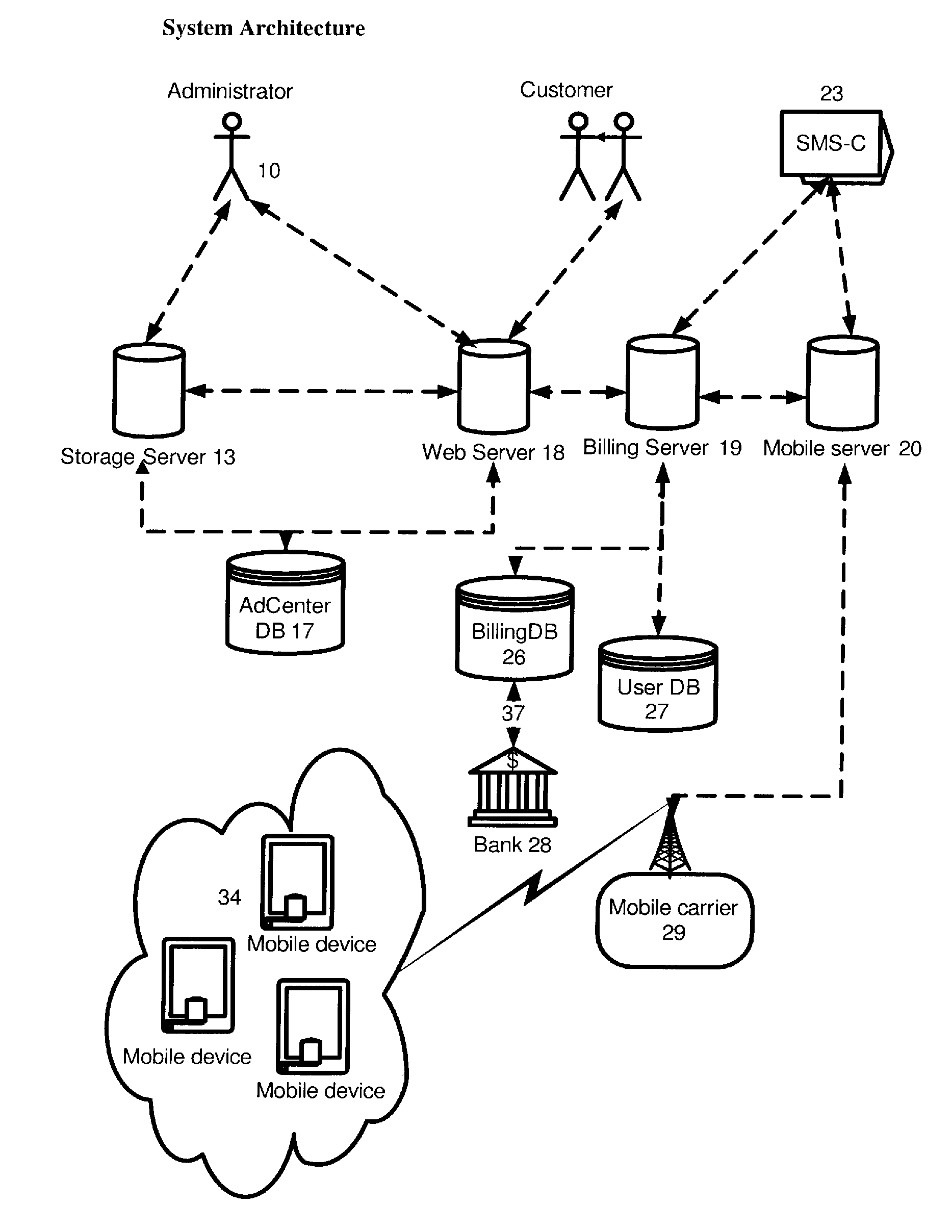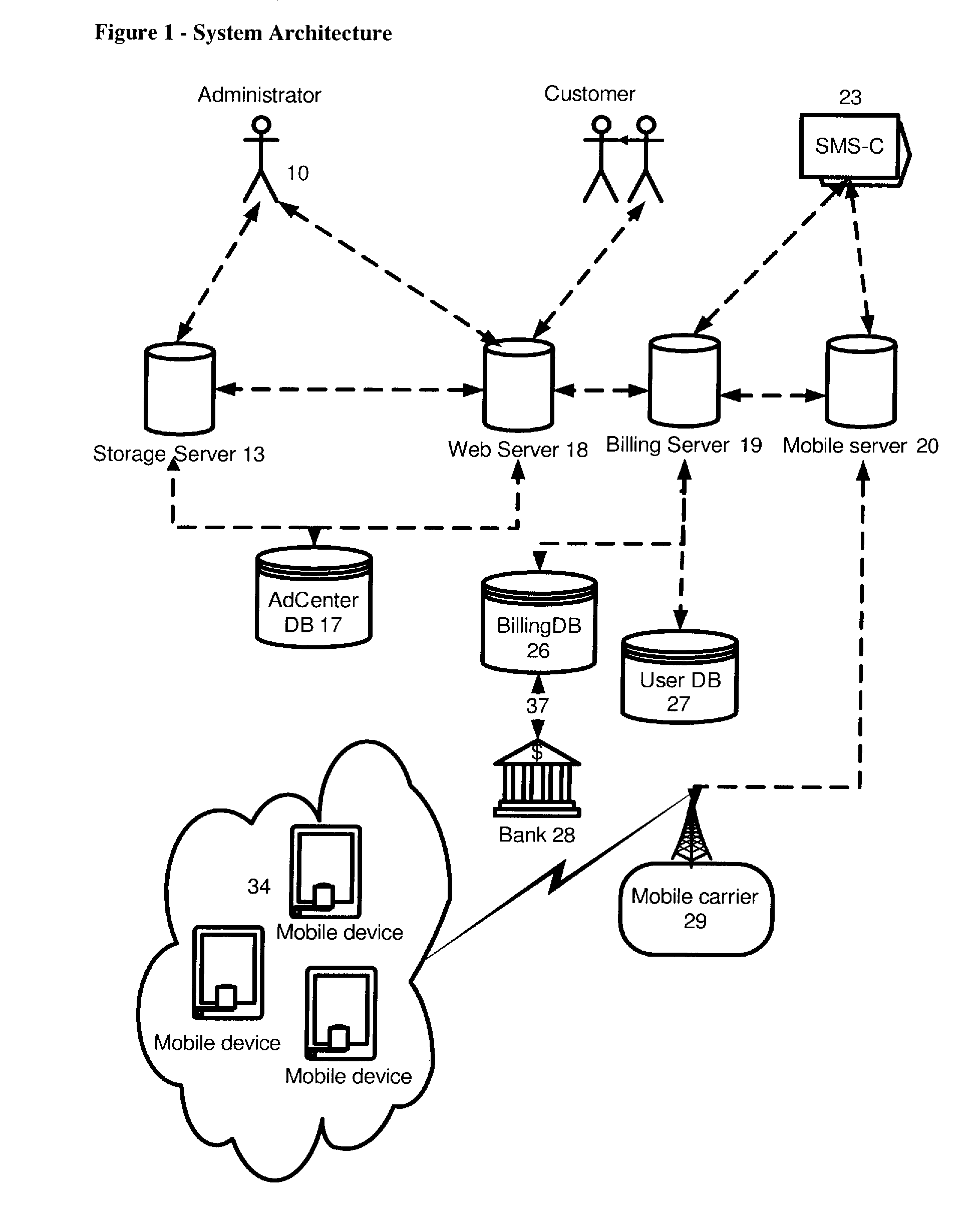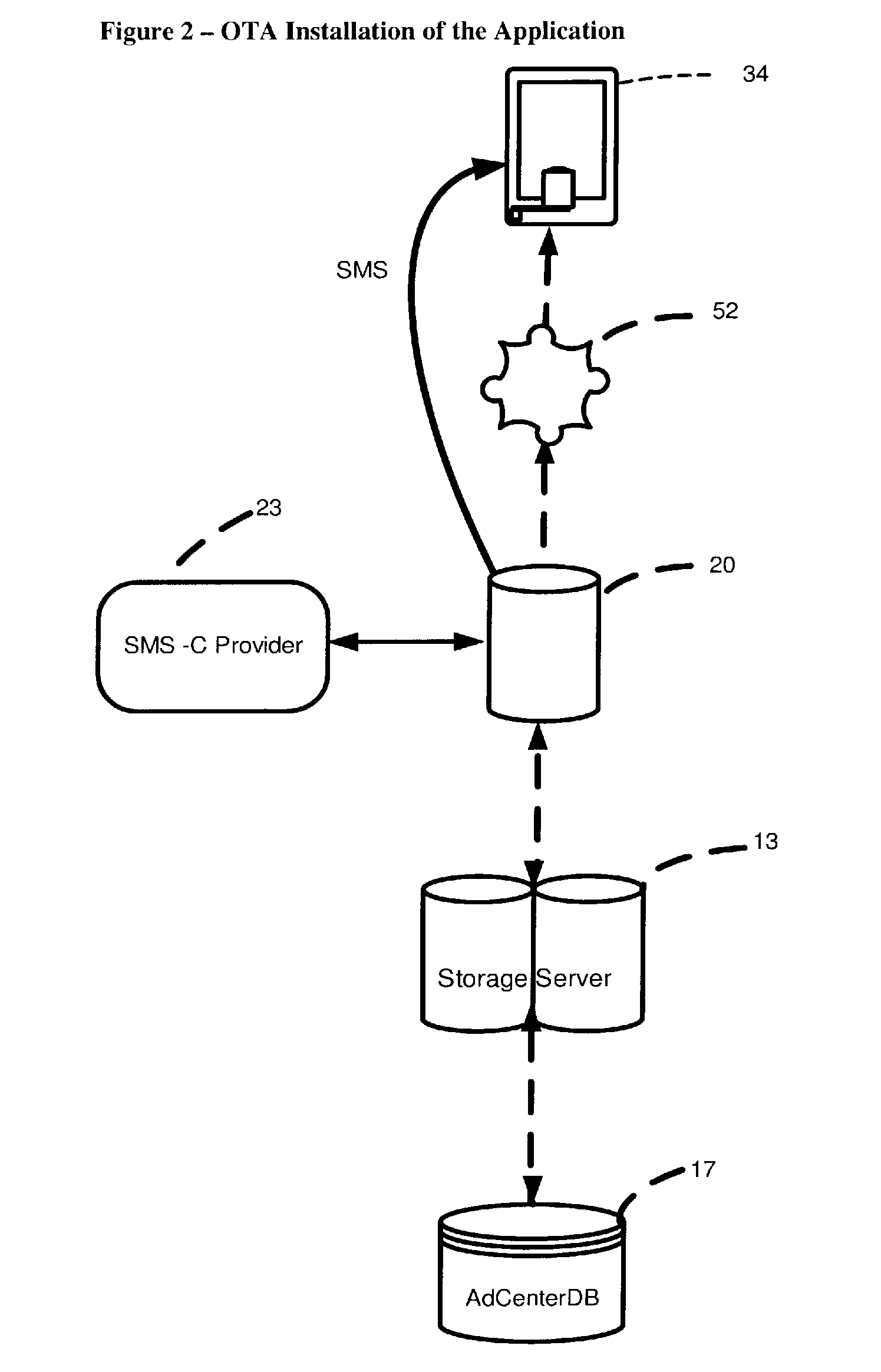Method and system for advertising in a mobile handheld device
a handheld device and mobile technology, applied in the field of mobile marketing, can solve the problems of disturbing the user, the user's desire to use the mobile device, and the mobile device is not an appropriate medium, so as to achieve the effect of no significant impact on the user's navigation on the mobile, the effect of reducing the cost of data transfer and reducing the battery consumption
- Summary
- Abstract
- Description
- Claims
- Application Information
AI Technical Summary
Benefits of technology
Problems solved by technology
Method used
Image
Examples
Embodiment Construction
Introduction
[0042]The application and method presented in this invention may be used to satisfy the need for users of handheld mobile devices with voice telephony capabilities in order to reduce their mobile communication costs as well as the need for advertisers to provide highly targeted and cost effective advertising. The handheld device could be, but is not limited to, a cellular phone or a telephone enabled PDA, hereinafter referred to as a mobile communication device (MCD).
[0043]The method and the system enable advertisement to be shown in the background of a display on an MCD, hereinafter referred to as wallpaper and / or screen saver, as well as in the foreground as one or several clickable gadgets. The content displayed in the wallpaper is static and always displayed at the background, or “lowest level,” of the display. Thus, the advertisement made in the wallpaper on the mobile device may be fully passive and does not in any way change the way a user interacts with the mobil...
PUM
 Login to View More
Login to View More Abstract
Description
Claims
Application Information
 Login to View More
Login to View More - R&D
- Intellectual Property
- Life Sciences
- Materials
- Tech Scout
- Unparalleled Data Quality
- Higher Quality Content
- 60% Fewer Hallucinations
Browse by: Latest US Patents, China's latest patents, Technical Efficacy Thesaurus, Application Domain, Technology Topic, Popular Technical Reports.
© 2025 PatSnap. All rights reserved.Legal|Privacy policy|Modern Slavery Act Transparency Statement|Sitemap|About US| Contact US: help@patsnap.com



